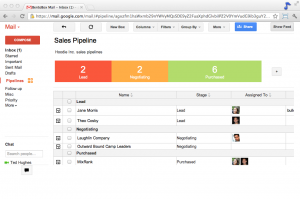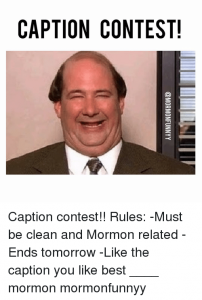Practical strategies to overcome marketing analysis paralysis, streamline decision-making and boost productivity in your marketing efforts.
If there’s one sentiment that’s rising to the top among marketers and marketing ops, it’s “I’m tired.” You see it on X, read it on LinkedIn and hear it in communities, conversations and threads. It’s time we address it head on.
Marketing has always been a quick-moving and problem-solving type of role, but the rate of change and innovation, especially in the marketing technology space is causing marketers to band together in frustration.
Fortunately or unfortunately (depending on how you look at it), the rate of change isn’t slowing down anytime soon. However, what can change is how we react, make better decisions and execute the fundamentals so that our companies can grow.
Cut costs but don’t cut the results
As you’ll see in Slack communities and subreddits, teams are being asked to cut costs while still driving results. This juggling act is causing frustration for internal teams, external vendors and executives alike.
Yes, AI can improve productivity, but that brings a whole new group of decisions to be made in how we use it, how it’s governed, etc. It’s all contributing to what I call “marketing analysis paralysis,” and you can recognize the signs and symptoms such as:
- Pushing priorities quarter after quarter leading to low employee morale as the development team’s work stalls, decreasing motivation and productivity.
- Indecision about pricing and launch channels for new products is causing missed market opportunities
- Dragging out decisions on new tech, like marketing automation platforms, causes operational headaches and slows down campaigns.
- Competitors pull ahead with better tools, while employees get frustrated with repetitive tasks, leading to lower job satisfaction and higher turnover risk.
No one wants to be caught in the middle — so let’s first examine what’s behind this paralysis and what that means for our companies.
What’s playing into the marketing decision fatigue
Information overload
Marketers today face an overwhelming amount of data and choices from various channels, tools and platforms, with a million “X vs. Y” articles for everything from your CMS to customer success.
With platforms like YouTube and LinkedIn, countless voices offer advice, leading to conflicting information and decision paralysis. This abundance of data makes it hard to discern what’s essential.
Fast-moving tech
Rapid innovation in the tech landscape is both exciting and overwhelming. New tools and platforms promise better efficiency and effectiveness but also bring opportunity costs.
Switching from a familiar yet inefficient system to an unknown, newer one can be scary despite the potential benefits.
Job and reputations are at stake
Layoffs continue to affect the industry, especially marketing, and marketers are wary of jeopardizing their jobs. While taking risks is part of the job, executive teams prefer certainty and low risk, creating a conflicting decision-making environment. Choosing the wrong tools, resources or vendors can harm brand reputation and market positioning.
This fear of making the wrong decision leads to excessive caution and delays, especially in B2B marketing, where long sales cycles and significant investments increase the pressure.
Complexity and variety of martech solutions
We’ve all seen diagrams demonstrating the sheer number of martech solutions available today. Overwhelming is an understatement. Each tool has its own features, integrations and learning curves. Picking the right ones can be daunting and lead to decision paralysis.
It can be tempting to be an ostrich wanting to bury your head in the sand — but these factors have real business impact. And not in a good way.
What it’s costing our companies and teams
Financial costs
Delayed decisions can lead to missed business opportunities and lost revenue. Competitors who move faster can capture market share and secure customers you could have had. Plus, dragging out decision-making can lead to higher costs from extended project timelines and resource use.
Operational costs
Indecision throws project schedules off track and creates inefficiencies where teams wait around for approvals or clearer direction, which reduces productivity and morale.
This slows down operations and affects the organization’s agility. It also makes it hard to seize new opportunities because time and resources are wasted on these bottlenecks.
Cultural costs
Indecision frustrates and demotivates employees, leading to higher turnover as talented staff seek more decisive workplaces. This also creates a toxic work culture, which infects productivity across the board.
What marketers can do to cope and fight back
1. Implement decision-making frameworks
Visualize your decision-making process and the cost of inaction. This helps communicate the impact clearly. Many marketers feel frustrated but haven’t mapped out these issues. Creating a simple table showing the consequences of decisions or indecision can clarify the situation.
Use structured decision-making frameworks to guide your decisions, such as:
These frameworks help reduce uncertainty and streamline the decision-making process, an essential skill of marketing ops leaders.
2. Encourage a culture of decisiveness
Marketers need to “lead up,” as in working with higher-ups to influence decisions and behaviors that improve results across the organization.
Fostering a culture that values prompt and decisive action is key. Empower employees to make decisions within their responsibilities and recognize decisive behavior.
Leadership should model decisiveness and provide clear strategic direction. If they don’t, practice leading up: Ask for a decision by a specific date and set a meeting in advance to build that decisive culture.
3. Set clear objectives and prioritize
With information overload, it’s often a matter of managing competing priorities. Clearly defining objectives and priorities helps focus decision-making. Marketers should identify the most critical decisions and allocate resources accordingly. Prioritizing based on impact and urgency can prevent paralysis and ensure the most important actions are taken promptly.
People often prioritize tasks with short deadlines over more valuable tasks. To address this:
- Schedule important tasks with extra time.
- Break big tasks into smaller steps.
- Learn to manage emotions like anxiety regarding difficult tasks.
- Spend less time on unimportant tasks.
- Use strategies to regularly step back to see and track the big picture.
Marketing and MOps roles are becoming more important as they get harder
Marketing and marketing operations are increasingly vital for a company’s success. The challenges won’t go away, but mastering these skills and strategies can make your efforts more effective.
For instance, in our opening example about companies delaying their product launch due to indecision on pricing and channels, companies in this position can mitigate the associated costs by using a decision matrix to standardize decision-making and setting a firm deadline to pull the trigger.
In the second example (where indecision about choosing a marketing automation tool is causing inefficiencies and reducing competitiveness), by using the Eisenhower Matrix to prioritize decisions and then running a pilot program to test the top platform options, companies can move forward without wasting time or sacrificing a technological edge.
Don’t let indecision become a competitive weakness in your organization. Implement these strategies to turn paralysis into action.
The post How marketers can break free from decision fatigue appeared first on MarTech.
MarTech(6)
Report Post








